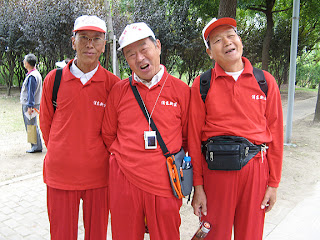It's raining today so I didn't feel like bundling up in the cold downpour to do my daily 30-min walk. (Most often in the year I train 2x/day: a brisk, hilly walk and some other training, like weights, core training, tango dancing, Exuberant Animal games, bike outdoors or indoors, etc). However, I needed to exercise despite the outdoor weather.
I refuse to even listen to my own excuses, so instead of creating a rationale why I can't get my exercise, I decided to solve the problem how I CAN do my exercise.
So I put on my iPod (I listen to radio podcasts) and I walked up and down my stairs. Muscles and physiology trained:
- quadriceps (front of thighs)
- hamstrings (back of thighs)
- hip flexors
- glutes (big muscles of my butt)
- hips (small muscles of my butt)
- calves
- ankle muscles
- feet (I was in socks)
- cardiovascular (heart, blood systems, and lungs)
I did 8 minutes. Only 8 minutes and I was breathing hard, muscles pumping. That's only a quick break in my otherwise busy (multi-project) day.
What's REALLY good is that I can do another 8 minutes again... and then again... and again today - all at times that I'd be needing to get away from the computer anyway*.
What's better, is that my cat really wanted to play - so for 5 minutes I held a 12-lb cat while doing the stairs. He purred, I climbed.
HOW YOU CAN DO IT TOO:
- If you are at work, climb the stairwell for 8-10 minutes on a break, a few times a day. You won't really get sweaty but you will make a dent in your training for the day. 3 times and you'd done 30 minutes - plus, you are at work so it won't look like you are slacking off.
- If you are at home, do this at home at any time. I recommend NOT doing it before bedtime, because it can jazz you.
- If you have small kids (or a baby), this is a way to hold the baby and get some exercise... or put a toddler near the staors and play with it as you walk up and down. Trust me, if it kept a cat happy (notorious for losing interest), it will keep a baby happy.
How did this work for you?
---------
* Additional ways of making stair-climbing more exercise-oriented:
- go fast up and down - very cardio
- go by 2's at a time
- go up or down in a very w-i-d-e stance
- go up or down in a very narrow stance
- hold something in your hands or arms (cat, baby, books, weights, etc)
- do it with radio, music, friend or podcast: make the time go by quickly
- do deep knee bends when going up


